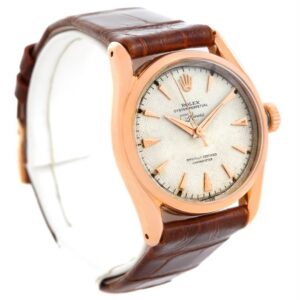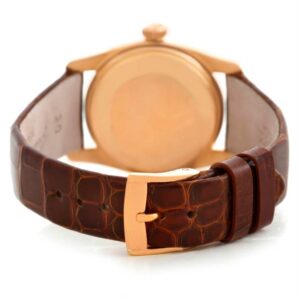In recent years, customized Rolex watches have been gaining popularity again, particularly on social media platforms like Instagram. Many people are drawn to the idea of adding a personal touch to their watches, opting for unique dials, hands, numerals, bezels, and even gemstone embellishments. This surge in customization is often driven by the desire to own a watch that stands out, especially for those who can’t afford high-end limited editions like the Rainbow Daytona. While customizing a Rolex may seem appealing, there are compelling reasons why it is ultimately a bad investment. 
The Risks of Modifying a Rolex
One of the biggest drawbacks of customizing your Rolex is that it immediately voids the brand’s warranty – known as the fake Rolex Guarantee. This warranty, which lasts for five years from the date of purchase, is only valid if the watch remains in its original, unaltered condition. Rolex is very clear about this: any modification, whether it’s replacing components with non-Rolex parts or adding accessories, invalidates the warranty. Rolex’s official statement on the matter reads: “The substitution of components with, or the addition of, components or accessories not manufactured by Rolex will invalidate the Guarantee.” This means that even minor modifications will render the warranty void, leaving you without support from Rolex for repairs or servicing.
Furthermore, if you send a modified Rolex to an official service center for maintenance, your request will likely be denied. Rolex has even been known to mark such watches with an engraved “X” to indicate that they have been altered. This can further damage the resale value of the watch, as potential buyers tend to prefer watches with original warranties and documented service histories. 
Legal Consequences of Modifications
The risks associated with customizing a Rolex go beyond losing the warranty and decreasing resale value. Rolex is actively pursuing legal action against those who engage in unauthorized modifications. In a landmark case in 2023, Rolex filed a lawsuit against Jewelry Unlimited, a jeweler in Atlanta, for selling modified Rolex watches. These watches had undergone common customizations, including dial replacements, bezel swaps, bracelet changes, and the addition of diamonds. 

The court sided with Rolex, ruling in favor of the brand’s claims of counterfeiting, trademark infringement, and unfair competition. Jewelry Unlimited had tried to avoid liability by including disclaimers on its advertisements, stating that the watches were “100% genuine pre-owned” and that the diamonds were aftermarket. However, the court found these disclaimers insufficient, ruling that they failed to adequately inform consumers about the lack of affiliation between Jewelry Unlimited and Rolex. This decision reinforced the notion that modifying a Rolex watch in any way essentially turns it into a counterfeit, stripping it of its original value. 
Keep Your Rolex Original
The court ruling has made it clear that customizations not only risk devaluing your replica Rolex but may also make it legally problematic. Watches that have been altered with aftermarket parts or modifications are now seen as counterfeit, and their worth is significantly diminished. For collectors and enthusiasts, this reinforces a key piece of advice: to preserve both the value and heritage of your Rolex, it should remain exactly as it was when it left the factory.
Customizing a Rolex is a risky move, both financially and legally. If you’re in it for the investment potential, leaving your Rolex untouched is your safest bet. Anything less could cost you much more than you might expect.